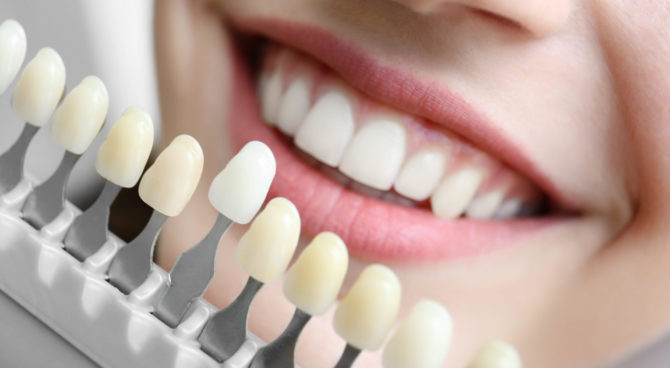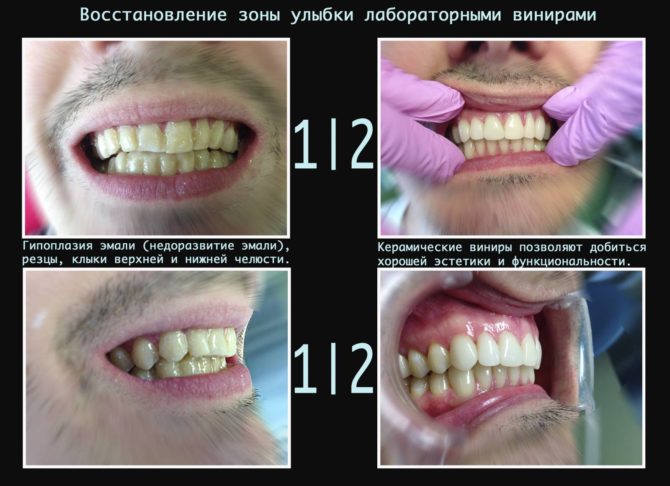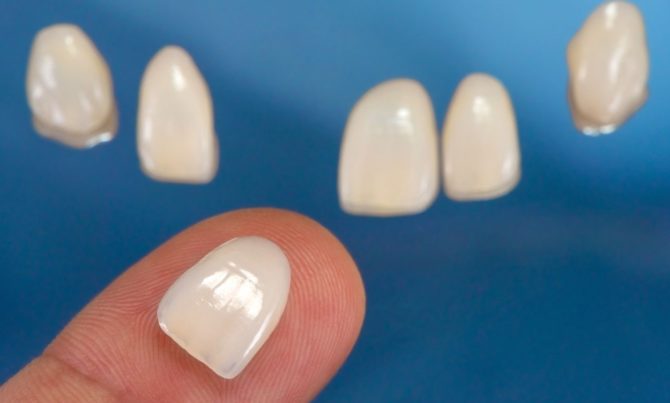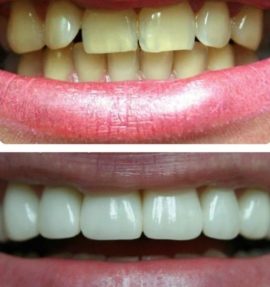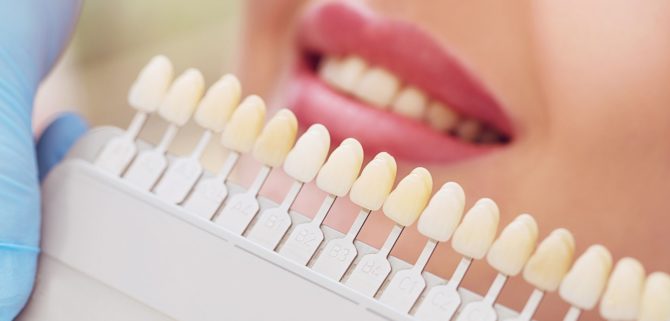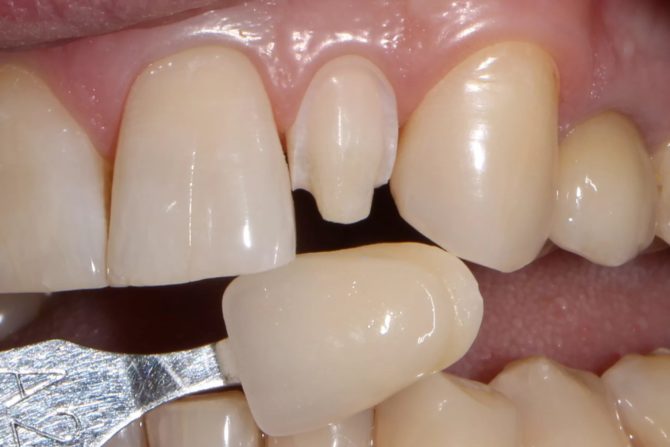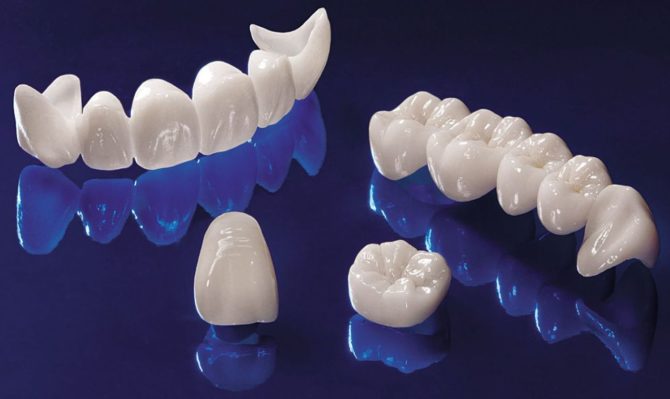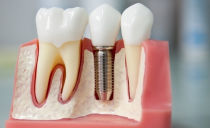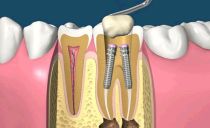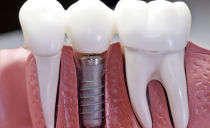Veneers on the teeth: what is it
Porcelain, composite and ceramic veneers are attached to the teeth with one goal - to achieve a quick cosmetic effect. With the help of these micro prostheses it is easy to restore or completely change the appearance: color and shape. Veneers are subject to what is inaccessible to classical whitening and traditional restoration.
Content
Indications
Most patients resorting to tooth restoration with veneers call one reason - the desire to make a smile more beautiful. Before visiting the clinic, few can pinpoint the problem and the need for a procedure. Doctors have a different approach - they formulated several definitions of what veneers are in dentistry.
According to the list of indications, veneer is a tool for correction:
- enamel erosion;
- incorrect position and abnormal shape;
- tooth colors - tetracycline teeth, the effects of depulpation;
- fluorosis;
- injured hard tissues - chips, cracks;
- significant interdental spaces;
- tooth surface damaged by old darkened fillings.
The number of plates depends on the cause: only one tooth is subject to restoration or it is necessary to put veneers on all the front teeth in the smile zone. As well as the choice of materials.
To whom is vinyl contraindicated
Despite the apparent versatility, veneer coating of teeth is not available to everyone. In the specialized dental clinic, failure is waiting for:
- people suffering from bruxism - involuntary grinding;
- malocclusion patients;
- owners of enamel with high abrasion;
- lost more than 6 chewing teeth;
- adherents of bad habits, leading to a reduction in the life of veneers: lovers with their teeth do "manicure", crack nuts, open bottles;
- professional athletes or people studying martial arts, whose risk of injury to the front of the jaw is much higher than the average person.
These are the main contraindications, with them the veneering technology is not applied. Most dentists will also refuse those who have large-scale tooth decay on the inside. Even if a seal is installed at this place.
What are veneers
Dental Veneers - these are thin durable plates designed to replace the surface of the teeth. Their minimum thickness is 0.2 mm. Since tooth veneering is an exclusively individual procedure, each micro-prosthesis completely repeats the surface of the tooth for which it was made.
You can see how veneers look on your teeth and what it is in the photo:
In a professional performance, vinyl teeth cannot be distinguished from their own, and they are absolutely not felt in the oral cavity.
Advantages
The absolute benefits include:
- The speed of manufacturing veneers.
- Durability, but only when neatly worn.
- Natural look.
- Aesthetics.
Often the installation of veneers on teeth is done in just two visits to dentistry. The process proceeds especially quickly when the choice is made in favor of composite veneers, which is due to the technology.
disadvantages
The main disadvantage of this method is the inevitability of turning. To the veneer has taken the correct position, the doctor is forced to grind the enamel. The process is irreversible, and in case of complete removal of the microprosthesis, tooth restoration will become a very difficult task. In addition, the disadvantages of vinyl coatings include the high cost of ceramic products and the short life of the composite.
It has been observed that over time, in some patients, teeth with veneers installed on them darken and acquire a yellow-brown tint. And it is not always successfully corrected by the plates due to their low masking ability.
What and how are veneers made of teeth
Four types of products are at the disposal of modern aesthetic dentistry. Veneers are made of ceramics, composite material, porcelain, zirconia. Each of them has unique characteristics and can be the best option in different situations.
Ceramic veneers
Ceramic veneers put on the teeth of those who are willing to pay a fairly high price for them. The cost of one lining starts from 15 thousand rubles, but the quality here is also up to par.
The material is durable, little susceptible to abrasion and resistant to many dyes: tea, grape wine, coffee, tobacco.
Practice shows that ceramics:
- densely covers teeth, without leaving caries the opportunity to develop;
- operated without loss of appearance 10-11 years;
- as seen in the photo, it has a rich palette of natural and "Hollywood" shades.
In Moscow, ceramics is the most popular material. It is used by leading laboratories, and demand is growing every day.
How to make and install
The process has long been debugged, today it is only being improved in small technical details. First of all, they select the veneer of the desired shade, and then:
- Turn the surface of the tooth.
- They take a cast, cast a plaster model.
- They put temporary lining made of plastic.
- As soon as the permanent plates are ready, they are placed on the teeth and fixed with special glue.
The patient takes an active part in the process. It affects the color selection, chooses which teeth the veneers will put on, has the ability to evaluate the final result at the modeling stage.
Composite veneers
Vinyl composite is chosen because of:
- a chance to remove records in the future without serious consequences;
- the ability to deliver veneers in a short time;
- low cost.
The rejection of this technology is a frequent occurrence. There are several reasons: rapid darkening and staining, the need for cardinal grinding, insufficient strength, a strong dependence on the degree of professionalism of the doctor.
Methods of manufacture and installation
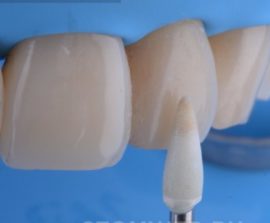 Composite material overlays are made in two ways:
Composite material overlays are made in two ways:
- By turning the enamel, using a special tool, the doctor applies several layers of light-polymer composite material to the front surface of the tooth.
- After turning, the technician makes an impression on which future overlays are modeled and made.
The second method is less preferable, since after installation, gaps between the veneer and the tooth are often formed. And this is the best condition for the accumulation and reproduction of bacteria.
China
More recently, porcelain veneers were considered an innovative method, today it is one of the well-developed ways to make a beautiful smile.
Material is different:
- resistance to food dyes;
- reliability;
- excellent esthetic characteristics;
- unpretentiousness in leaving.
Porcelain veneer elements do not cause allergies, provide a dense coating. Among their shortcomings, dentists single out only the need to remove the top layer of enamel, but this is also characteristic of other species.
Porcelain veneering steps
After examining the dentition, the doctor models the future look of the smile, grinds the enamel and creates an impression. Temporary veneers are placed at the time of manufacture. Porcelain plates can be made manually or using a special apparatus. The first option is recognized as more accurate and accurate.
Two weeks later, the patient is invited to the clinic for fitting.Temporary camouflage is removed and a new product is put on. If the veneer is comfortable and meets all the parameters, it can be glued into place.
Zirconium
Ideal, from a biological point of view, zirconium does not cause allergies, is durable, resistant to temperature extremes. Zirconium veneers on teeth have a service life that is almost two times higher than the same parameter for ceramic analogues.
The disadvantage of the method is the price. Vining by this technology is expensive, as it requires expensive equipment, high precision in manufacturing and a special composition for fastening: the material is extremely difficult to fix on the tooth.
In two visits
At the first visit, the shape of the lining on the teeth is determined, the color of the veneer. The doctor smoothes enamel areas that have large irregularities, errors. Then a three-dimensional three-dimensional impression is taken, the parameters of which are transmitted to a milling machine using a computer program - the machine itself grinds the product. At the end of the first visit, temporary coverage is applied.
The second visit includes the removal of temporary overlays, fitting and fixing of zirconia-based vinyl plates.
Veneers or crowns
Many patients are faced with the choice between traditional crowns and newfangled veneers. But Only a doctor can determine the appropriateness of a particular correction method.
In both cases there are direct indications and absolute contraindications. And in some situations, a specialist, in general, can offer a combined solution: for strength, install a crown, and solve the aesthetic problem using veneering.
Often used vinyl prostheses. As a lightweight flexible material, vinyl becomes a solution for partial tooth loss, with the risk of loosening.
Much depends on the competence of doctors: Do crowns fit exactly like veneers do to teeth, how much do they comply with the rules prescribed by the technology. Therefore, the main thing is to find a good orthopedist with the capabilities of a modern laboratory and get competent advice.
Innovation
In recent years, the growing popularity of a new type of veneer - lumineers. Their main advantage is the installation without prior grinding of the tooth surface. The absence of unpleasant sensations and painlessness attract patients, despite the high cost of the products. The price for one lumineer ranges from 800 to 1,500 dollars.
Prices are quoted in dollars, as patient records are sent to American laboratories to create records.
Teeth coated with lumineers serve for at least 20 years without losing their pristine whiteness and impeccable shape. The material for the manufacture is all the same ceramics, only more technologically advanced and of high quality. And the process itself is markedly different from the usual one - the accuracy of reproducing a given shape is higher.
To make a choice in favor of this or that material is the right of each patient. But it is better to listen to the recommendations of a competent dentist.

